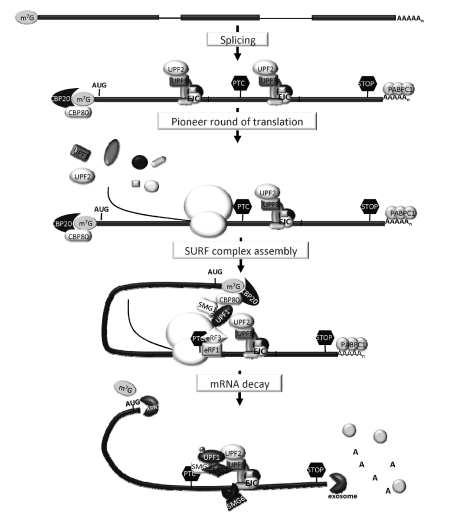Figure 1.
Simplified model of the nonsense-mediated mRNA decay (NMD) pathway. During splicing, exon-junction complexes (EJCs) assemble at 20–24 nucleotides (nt) upstream of exon-exon junctions. The translating ribosome displaces the EJCs during the pioneer round of translation. If a PTC is located more than 50–54 nt upstream from the last EJC, the terminating complex is able to interact with EJC-associated NMD factors. The CBP80 protein at the mRNA 5’ end can bridge UPF1-SMG-1 to eRF1-eRF3 at the PTC, leading to the formation of the SURF complex. The interaction of UPF1 with EJC-bound UPF2 induces the SMG1-mediated phosphorylation of UPF1 and dissociation of eRF1-eRF3. Phosphorylated UPF1 recruits SMG-7 and SMG-5 proteins and EJC recruits SMG-6. The decay of the PTC-containing transcript is triggered by SMG-6 which possesses endonuclease activity. The degradation pathways of PTC-bearing mRNAs involve decapping (by DCP1/DCP2) followed by 5’ to 3’ exonucleolytic activity (by XRN1) as well as accelerated dead-enylation and subsequent 3’ to 5’ exonu-cleolytic degradation (catalysed by the exosome complex).

